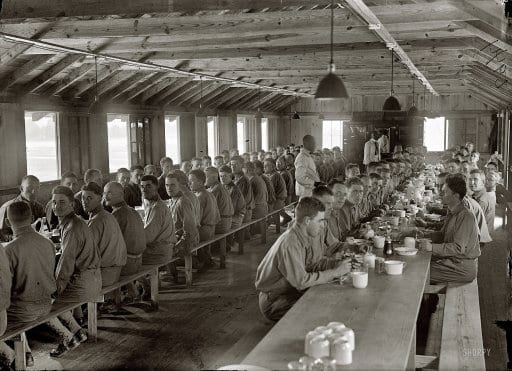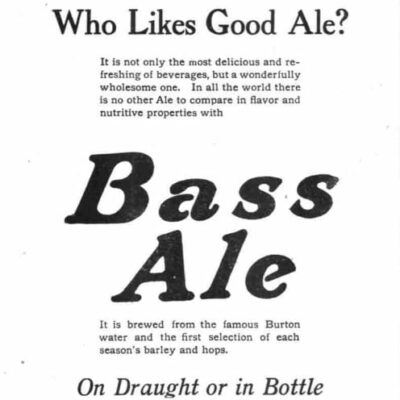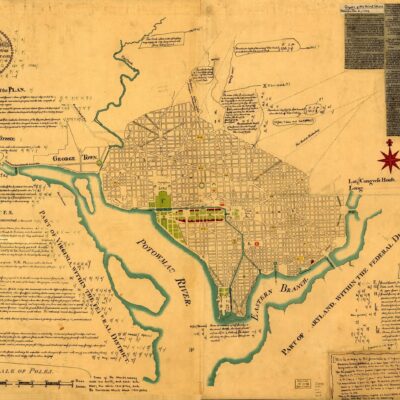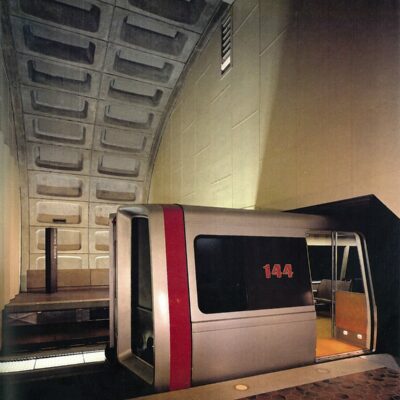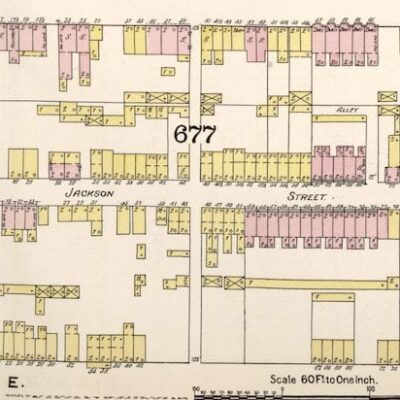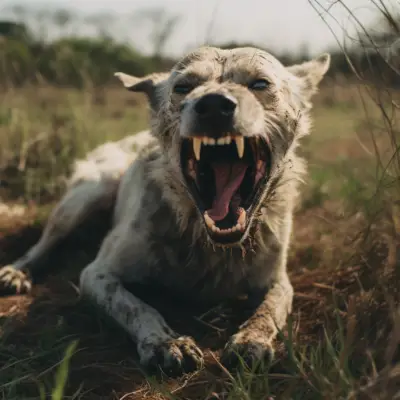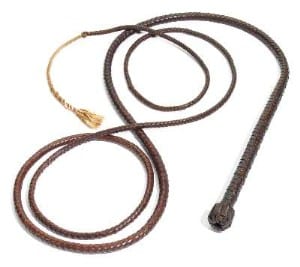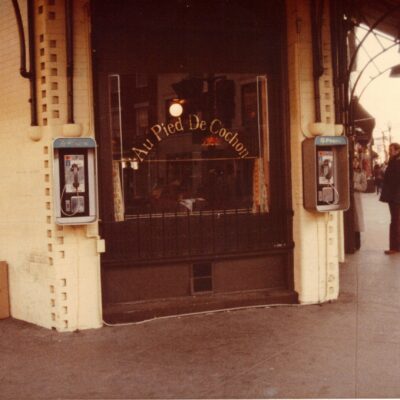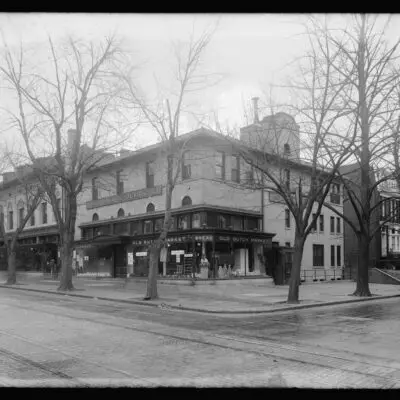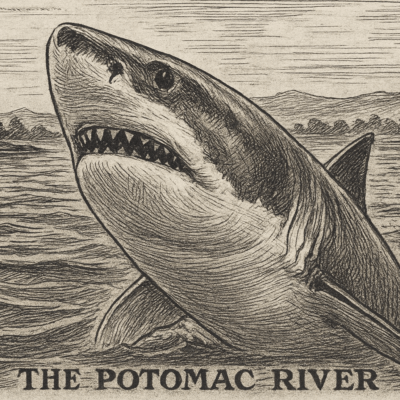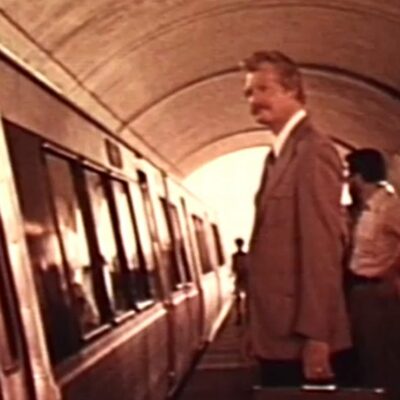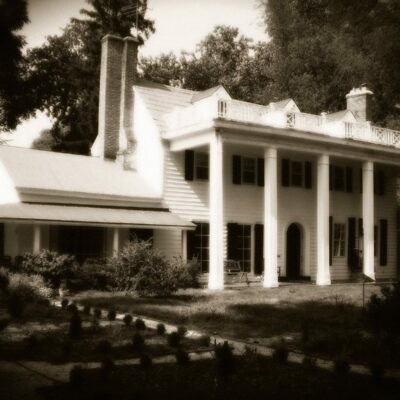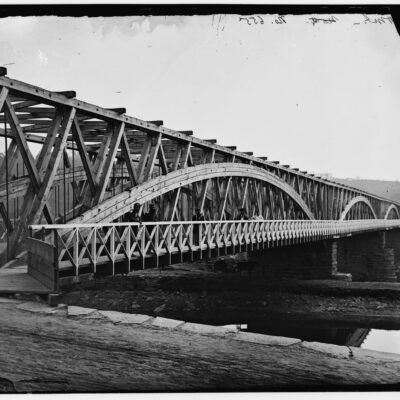Murders Committed, Trains Held Up, and Helpless Women Robbed, But Officers Do Nothing to Check Outlawry, for the “Crimes” Are in Moving Pictures.
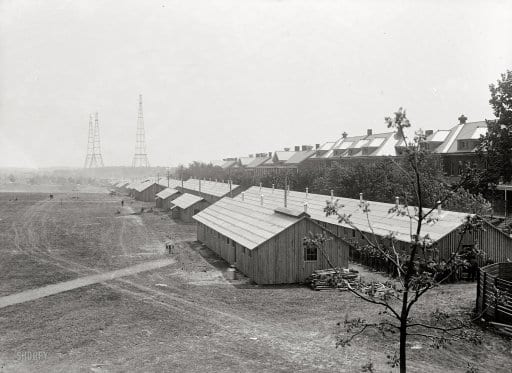
This was the headline on the front page of the Washington Times on Thursday, November 16th, 1911. Back in the early 20th century, Fort Myer, in Arlington, was being used as a movie set for silent films. Here’s the text of the article:
Murders are being committed, trains are being held up, helpless women are being robbed, and desperadoes are running riot within sight of the great dome under which all the nation’s laws are formally passed–if not made.
What is more, no officer–or civilian, for that matter–is attempting to check the wave of lawlessness. Those who commit the crimes that in the early days terrorized the Western plains and ended in a “necktie” party, if the principals were caught, are not even hampered in this age of civilization.
Perhaps you, as a law-abiding citizen of the Nation’s Capital, had no idea that such acts were being committed daily. But even though you had known, the chances are ten to one that you would not have been frightened. Still that would be no sign you were courageous.
Here Is the Truth.
Some one has said something about veracity will out, so the truth might as well be known now. Here it is, to wit: The said murders, hold-ups and other bloodcurdling crimes are not real honest-to-goodness crimes. They are just “pretend” crimes, but they are not enacted in the theater. They are enacted in the hills and mountains of Virginia, in the woods of Maryland, and along the Potomac in the District of Columbia.
The fact of the matter is that a moving picture concern is using the territory around Washington as the setting for any number of moving picture plays.
Sometimes an old dilapidated building at Fort Myer is used as the tavern, way out on the Western plains. Again the hills around the fort serve as the Rocky Mountains. Then, perhaps, a bit of wild land nearby will be a part of Mexico.
And the results–well, they are ideal. Even though you have lived at the fort all your life and had daily passed that tumbled-down old building the probabilities are that you would not recognize it as a picturesque tavern of the West.
Soldiers Take Part.
In many of the plays enacted in and around Fort Myer, the Fifteen Cavalry with blank cartridges has wiped out gangs of Mexican “greasers” in the most dramatic manner. The cavalrymen have charged over the Virginia mountains and down into the valleys just in time to save the little “chee-lid” of melodrama fame. They have routed the hold-ups when they were making away with a trainload of wealth, and they have been on all kinds of breakneck escapades.
The making of a moving pictures at the fort has been particularly interesting. Six weeks ago Wilbert Melville, with his cast of ten people, two automobiles, two tons of scenery and ten Western broncos, journeyed to Washington from the Lubin studios in Philadelphia.
A temporary theater has been built at Fort Myer for the “inside” work and the territory in and around Washington has been serving for the outdoor scenes.
This week Mr. Melville has been at work on a very elaborate film–one that will cost several thousand dollars before it is ready.
Films Are Costly.
One moving picture film is required of each director weekly. The average film costs $2,000 to produce. The moving picture actors and actresses, most of them, receive higher salaries than are paid those playing regular parts in the theaters of principal cities.
The work of making pictures involving scene in and around Washington will continue until snow falls. Most any day, if you go to Fort Myer, you can see painted Mexicans and brigands riding Western horses at breakneck speed. Oftentimes they are shot and fall from their saddles while the horses are on a dead gallop. The making of the pictures has aroused a great deal of interest among the residents of the fort. Many of the officers’ wives at the post have figured in the plays.
How quaint … “moving picture plays.”
Thanks, as always, to Shorpy for the great imagery.
